After years of crafting with rocks we often get asked: what is the best paint for rocks? With an endless number of paint options available it’s difficult to know where to start. We’ve created this ultimate guide by testing several different types of paint for these key factors: coverage, water and weather resistance, application ease and range of color options. Read on for our recommendatios and tips for making the most out of your rock painting sessions!
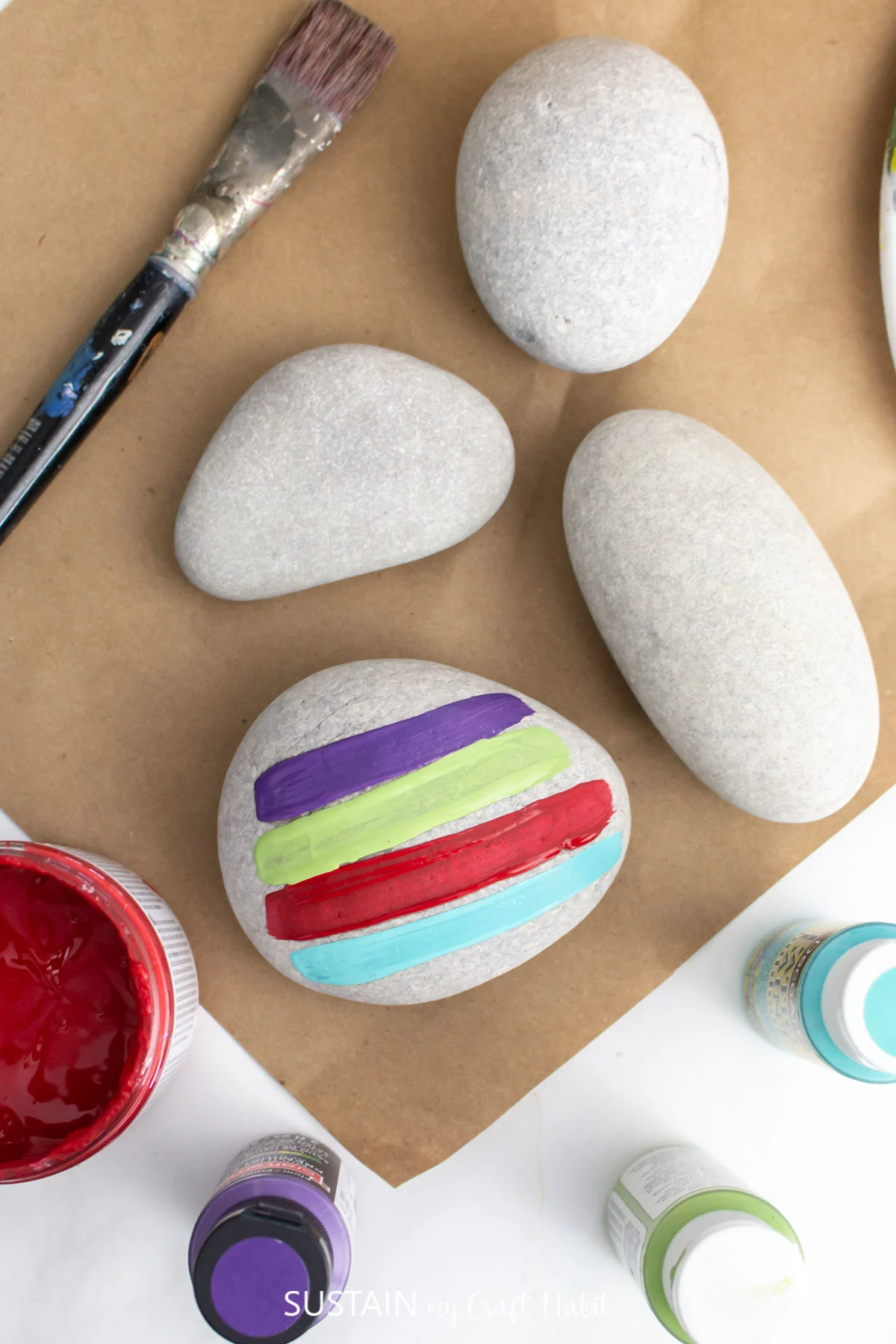
Disclosure: This post contains affiliate links for your shopping convenience. Should you choose to purchase through them, we will make a small commission at no extra cost to you. You can read our full disclosure here.
Rock Painting Rocks!
Rock painting can be a fun activity at any age and at any time of the year. It’s a great way to get creative and keep busy. It’s an activity you can do on your own or together with a friend or even a group of people.
Best Rocks for Painting
Before we get into the paints, it all starts with choosing the right rocks for your craft project. Over the years, collecting rocks for crafting has become one of my favorite hobbies.
Look for rocks that:
- have smooth surfaces such as sandstone or limestone rocks
- come in different shapes and sizes (sometimes it’s the shape and size of the rock that inspires the painting so keep an open mind)
- flat rocks or rocks with a flat surface are easier to paint on than rounded surfaces or jagged edges
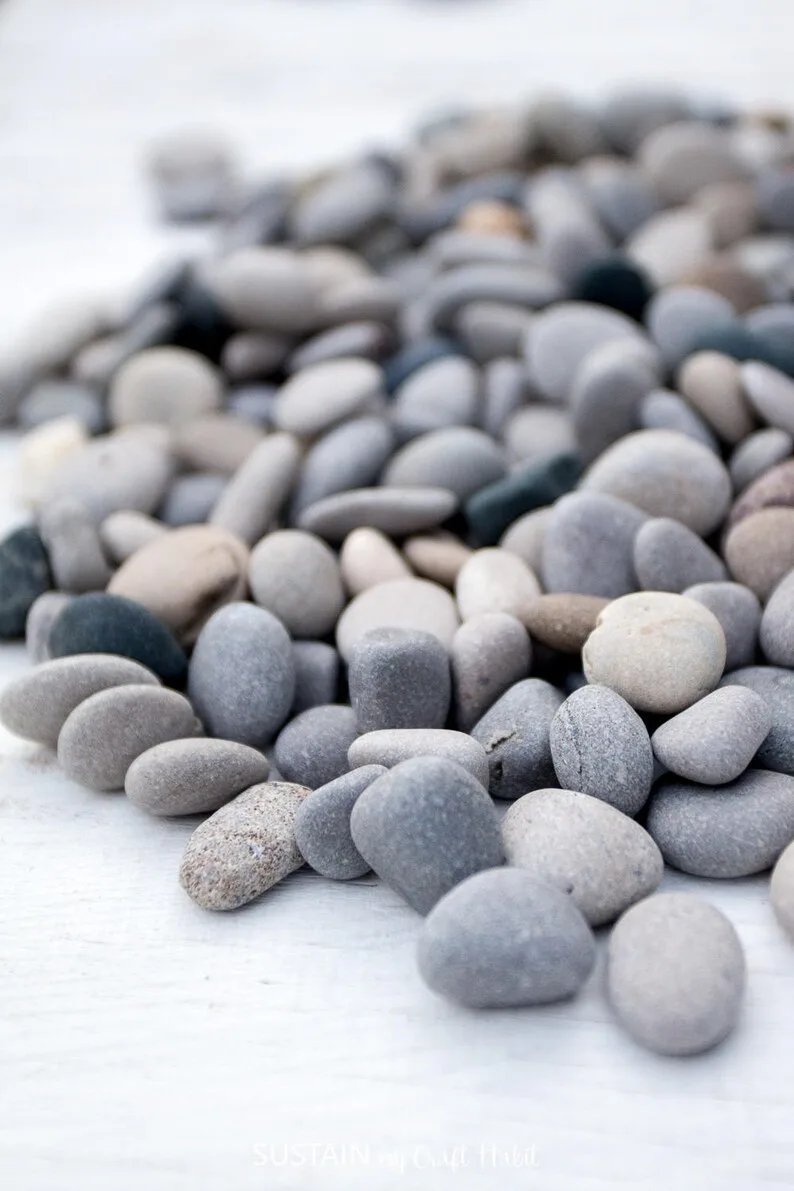
You can gather your own rocks from your neighborhood, a local landscaping company, home improvement stores or even a local craft store.
We also sell rocks in our Sustain My Craft Habit Etsy shop in a variety of shapes and sizes so be sure to check our our listings here. You can find more information here on places to find rocks to paint.
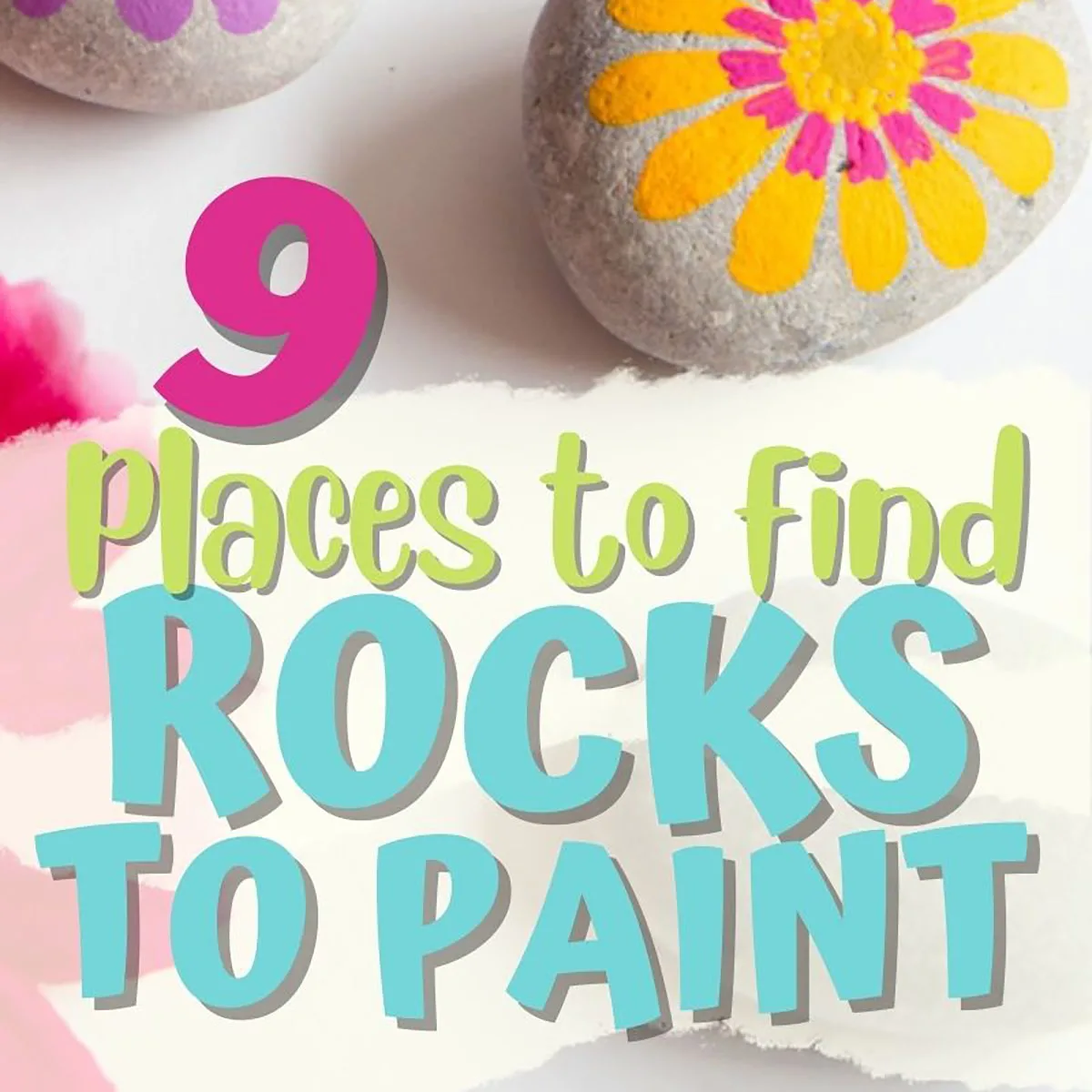
Keep in mind that river rocks and lake rocks tend to be smooth, whereas, rocks from landscapers are often rough with uneven surfaces. Rocks that you purchase at the craft store usually have a wax coating. If this is the case, we recommend cleaning the surface of the rock with water and mild soap as with any rocks before you begin painting.
Get updates on the latest posts and more from Sustain My Craft Habit straight to your inbox by joining our weekly newsletter. We promise to send you only the good stuff!
Best Paint for Rocks
When it comes to rock painting, we’ve tried many different types of paints as well as different techniques. These are our 4 favorite paints to use on rocks along with the pros and cons for each:
- Acrylic Paint
- PRO: comes in an unlimited number of colors; leaves a matte finish; fast drying
- CON: tends to be a bit thin requiring extra coats (at least 2 and up to 4 coats of paint for full coverage); is not weather resistant so needs to be sealed
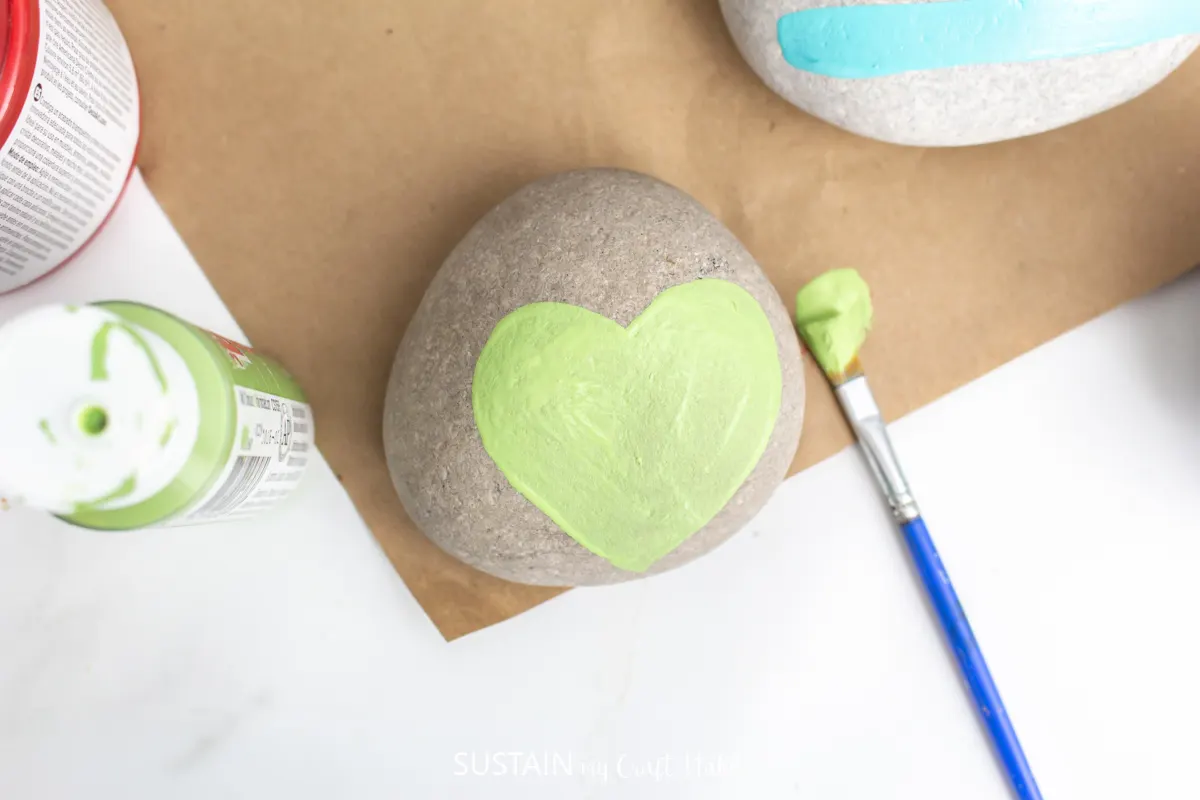
- Chalky Paint
- PRO: provides excellent coverage; leaves a matte finish; fast drying
- CON: chalky paint is more expensive than crafter’s acrylic paint; doesn’t come in as many color options but is mixable; is not weather resistant so needs to be sealed
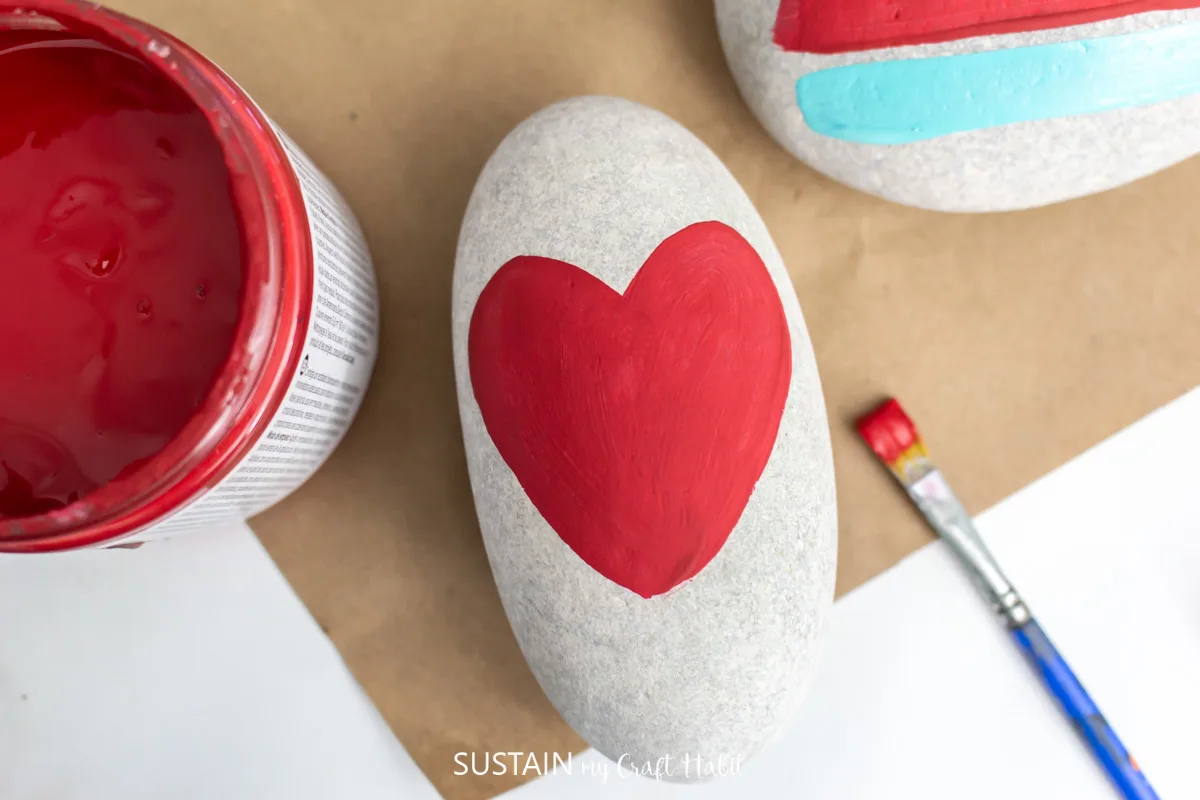
- Muti-Surface Satin Paint
- PRO: provides great coverage; glides on easily and smoothly; very durable paint; is weather and water resistant so it does not need to be sealed after painting; available in many different colors (including bright colors and vivid colors) that are also mixable
- CON: leaves a shiny finish; can appear streaky and dark will need extra coats for better coverage
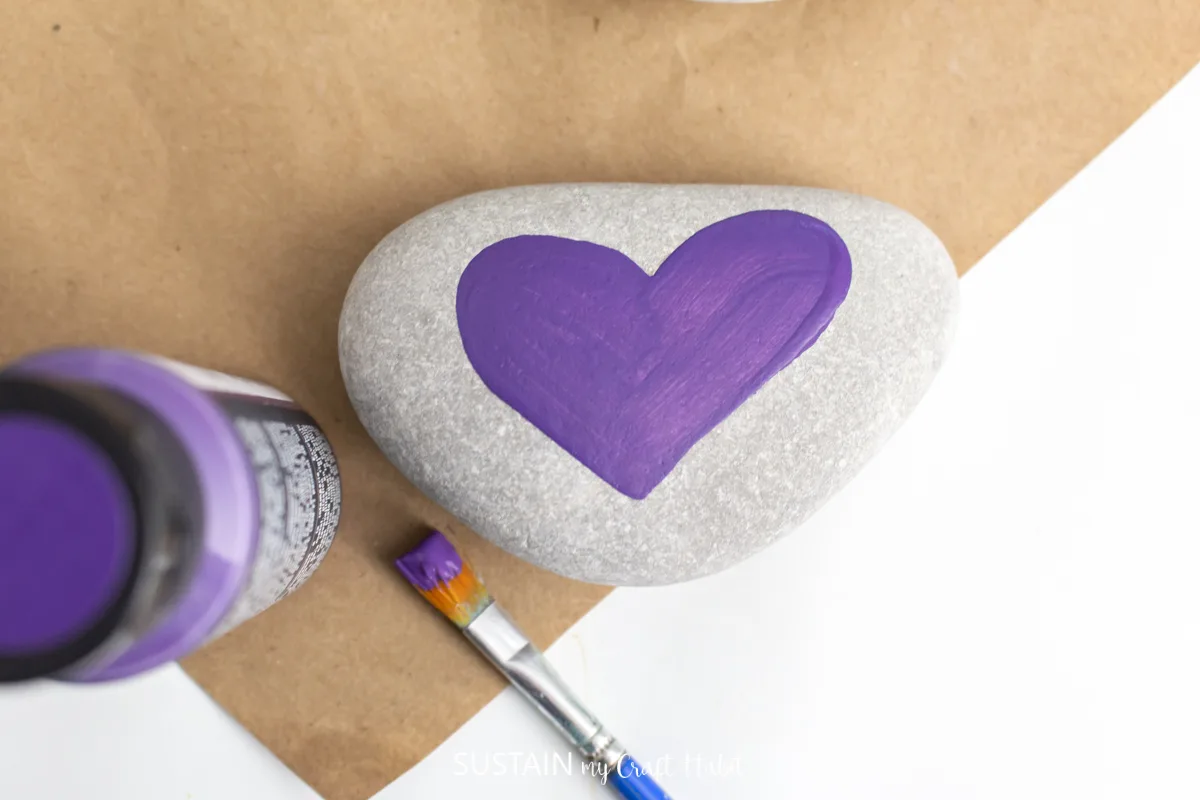
- Outdoor Craft Paint
- PRO: provides excellent coverage with just a single coat; glides on smoothly; extremely durable; is weather and water resistant so it does not need to be sealed after painting
- CON: leaves a shiny finish; does not come in as many paint colors (although it is mixable)
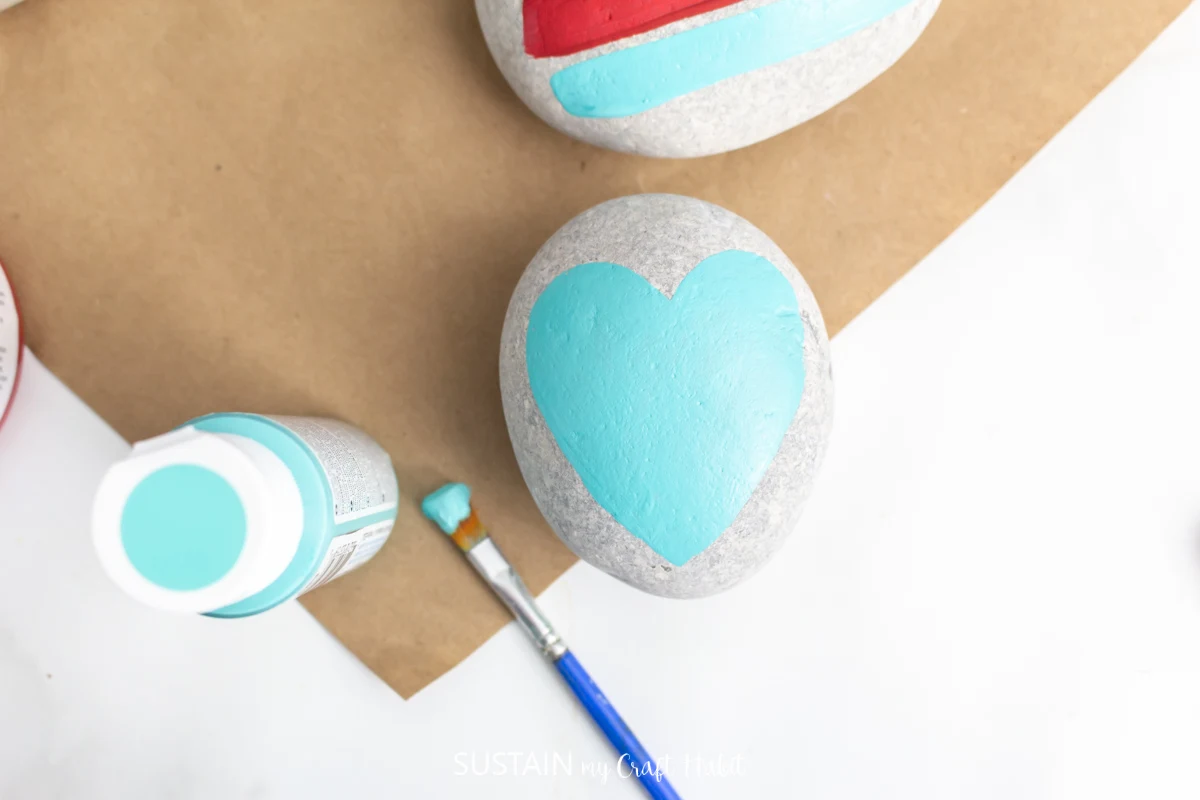
Best Way to Seal Rocks
If you plan on scattering your painted rocks in the flower beds or anywhere outdoors, use paints intended for outdoor use for the best results. Some examples of outdoor acrylic paint that will withstand the great outdoors include DecoArt Multi-Surface Satin paint and DecoArt Outdoor Patio Paint.
However, you can also use a regular acrylic paint such as Americana Acrylics and DecoArt Americana Chalky Finish but be sure to seal it after painting for permanent waterproof protection. You can use an aerosol spray such as Americana Acrylic Sealer or a brush on such as Mod Podge Outdoor.
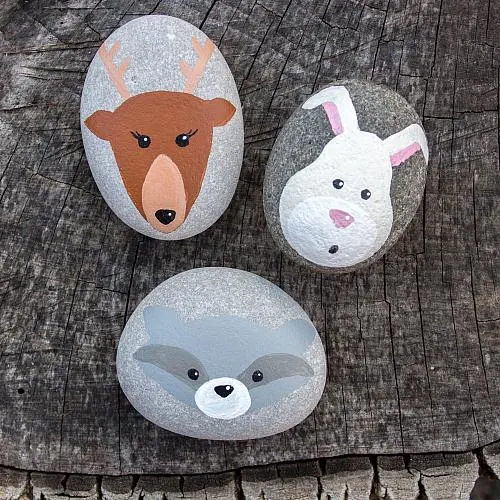
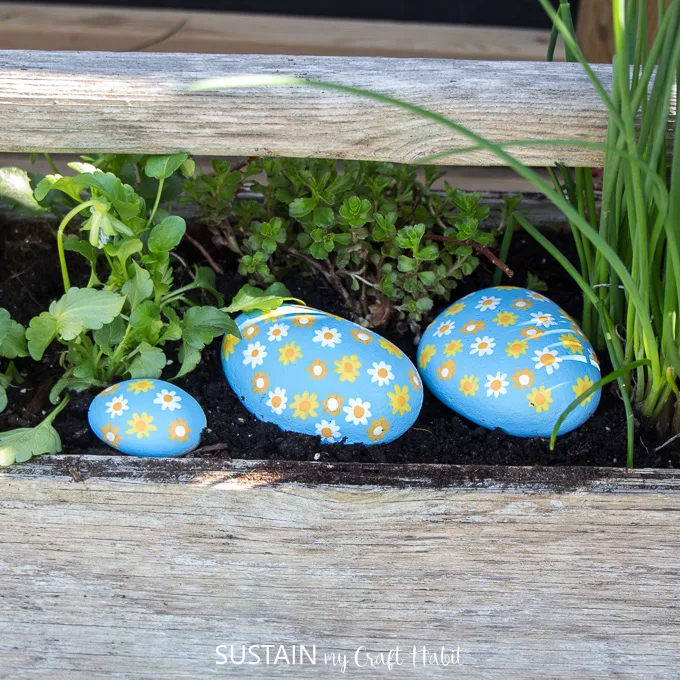
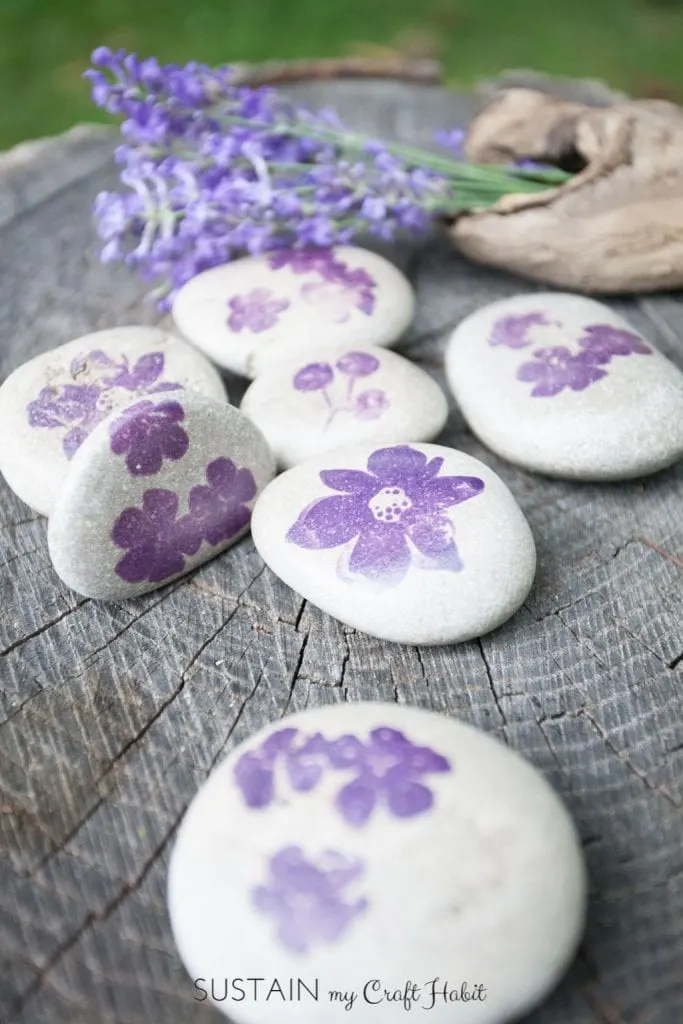
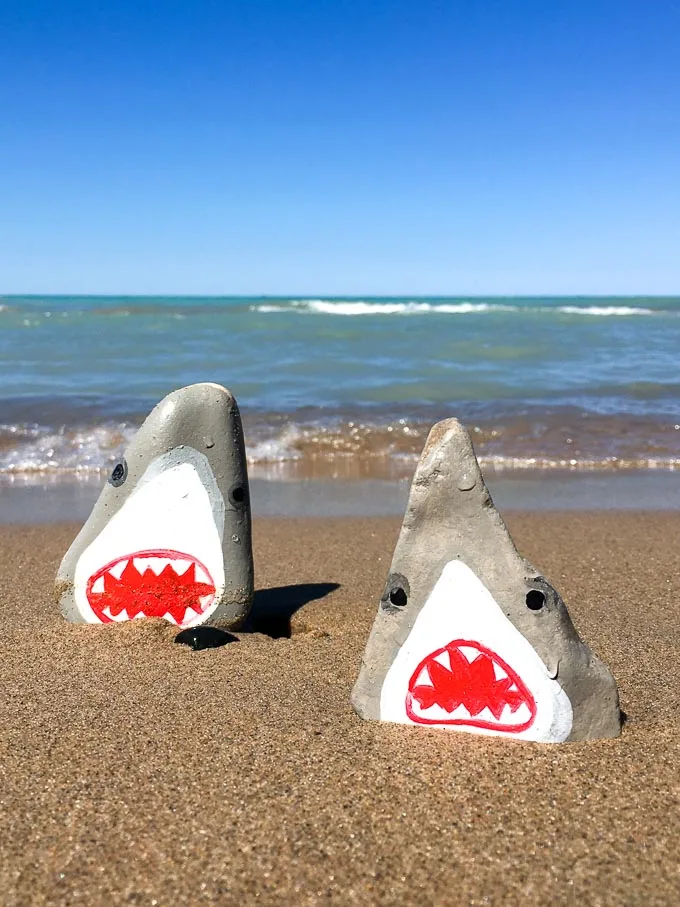
Best Paint Brushes to Use
Depending on what you plan to paint, having a variety of paint brushes will make all the difference.
- Fine tip brushes are perfect for small details, such as facial features and fine lines
- Smaller angled or flat paint brushes for painting the design on to the rock
- Larger paint brushes for applying the base coat over the entire surface of the rock
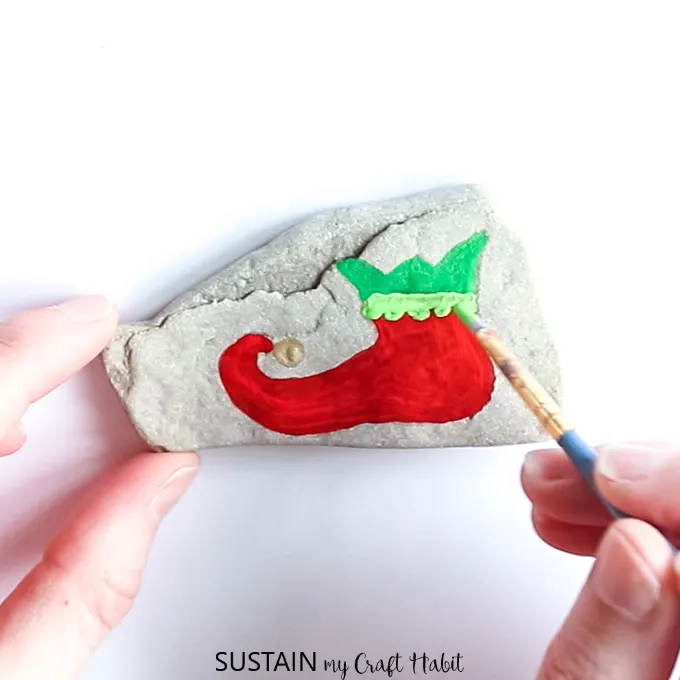
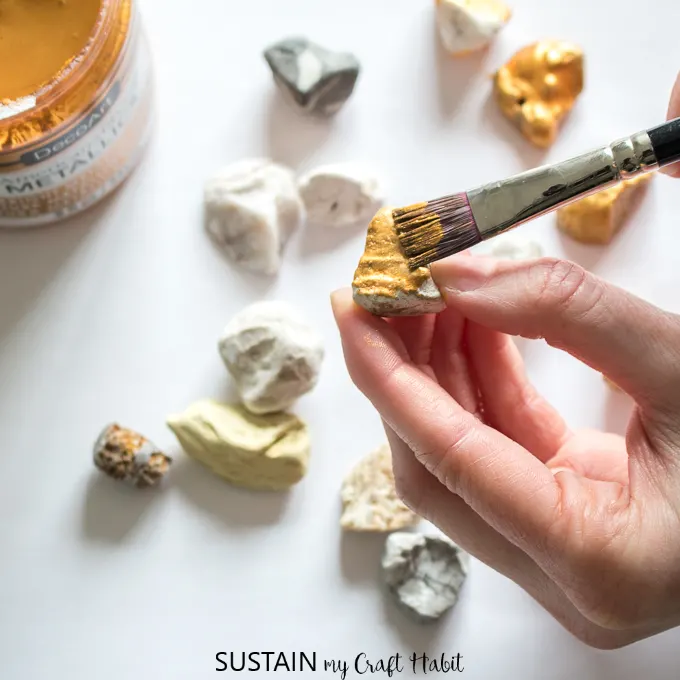
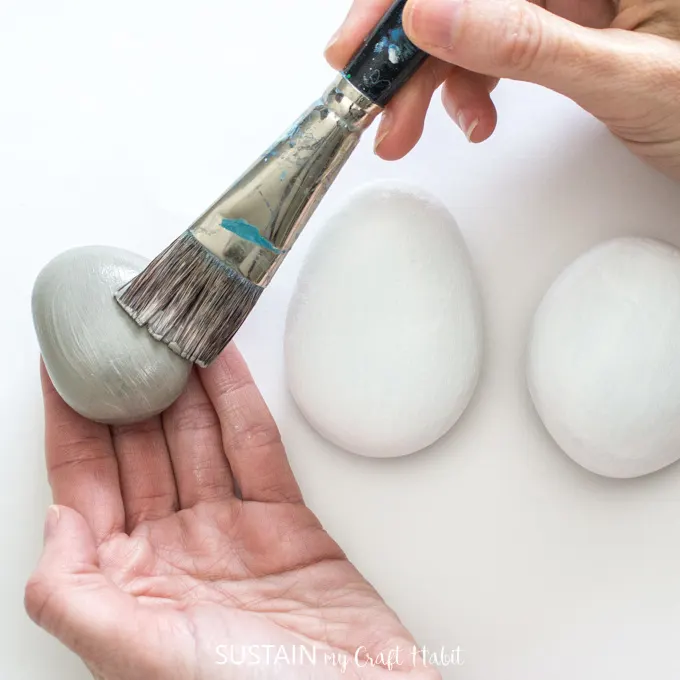
The opposite end of the paintbrush is perfect for adding polka-dots or small circles as we did with these painted mandala heart rocks and painted hyacinth flowers on rocks.
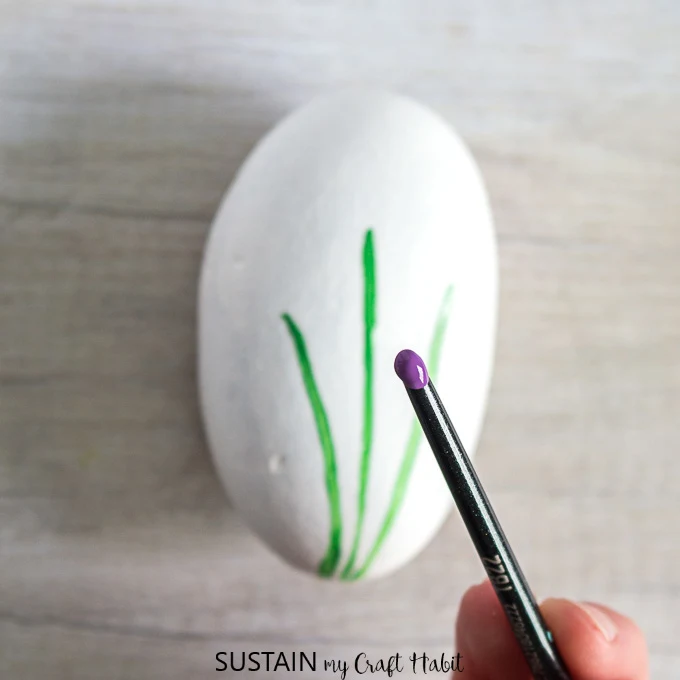
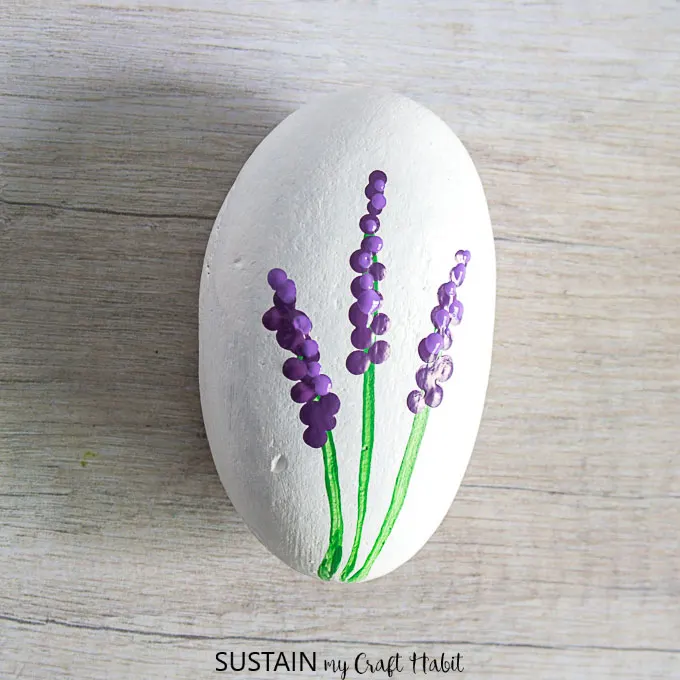
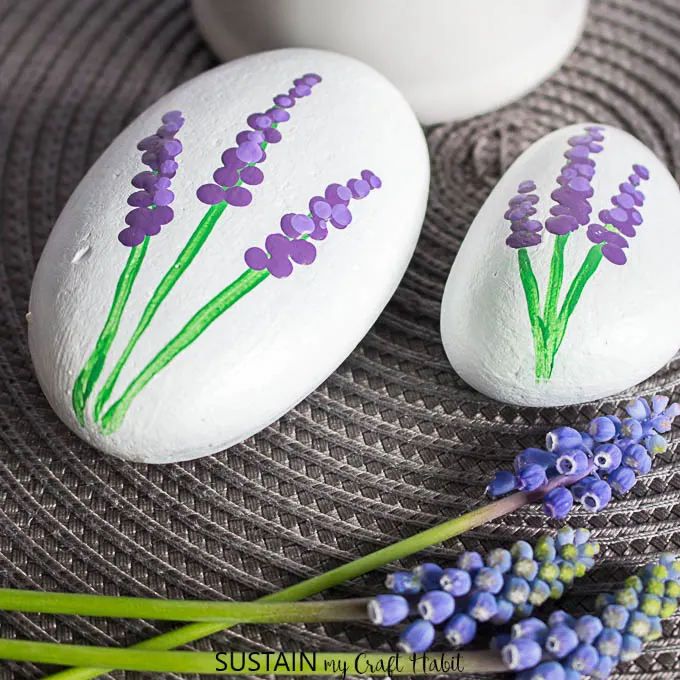
Best Paint Pens
Acrylic paint pens are amazing for capturing fine details like outlining or writing text or just simply for drawing fine lines like these patriotic painted rocks.
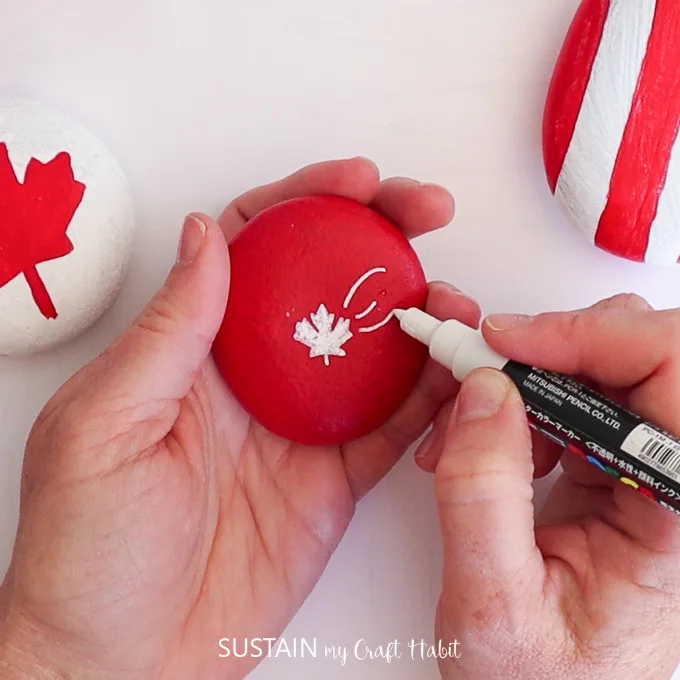
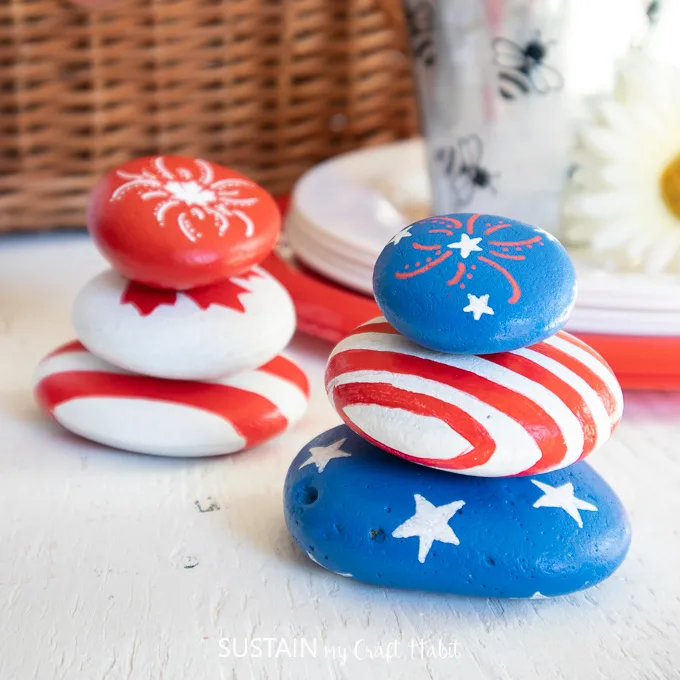
Artistro paint pens work great and come in a large amount of tips from extra fine to jumbo size. It’s an excellent way to add consistent fine details and highlights to your work. Additionallly, Micron paint pens with a brush tip will also do the trick but the fine tip micro pens as precise as they are won’t work well on rocks, especially on top of a base coat. You can find a very thorough review of using micron pens on rocks here.
We used Posca paint pens to write an inspirational message on these fruity painted kindness rocks and we loved the results. There was a little bit of smearing in the beginning but it just takes some practice to avoid the smearing all together.
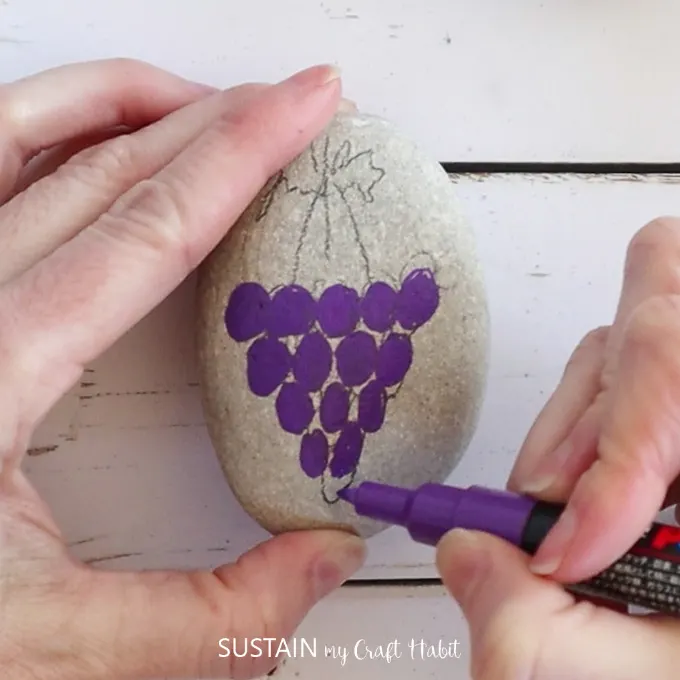
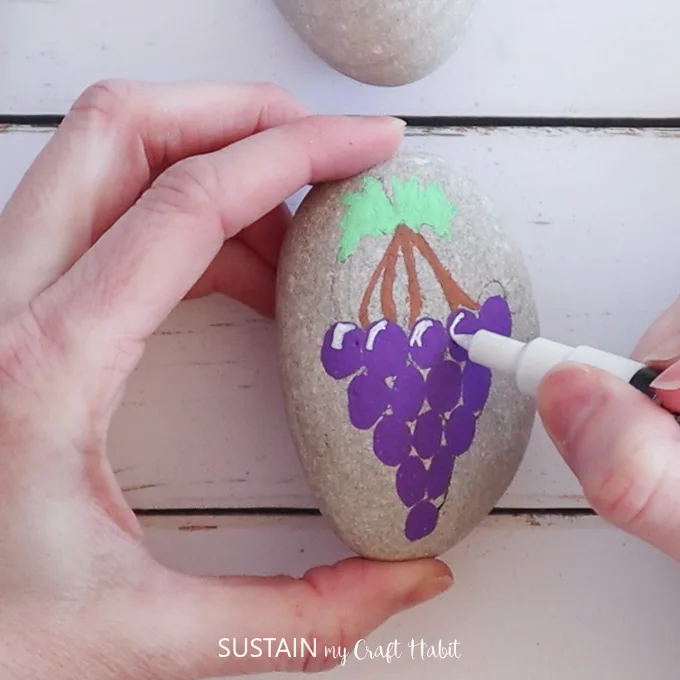
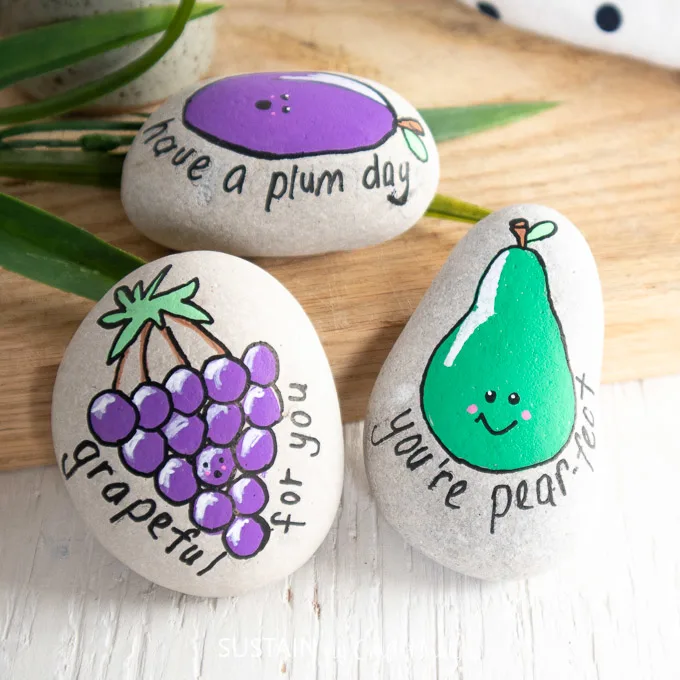
The downside of paint pens is that they come in a limited range of colors and it’s not possible to mix colors. Also depending on the size of the rock and thickness of the paint pen, it will take longer to complete than using a paint brush.
Another option to conside is simply using a Sharpie to add fine details to your rocks like we’ve down with this Easter-themed rock.
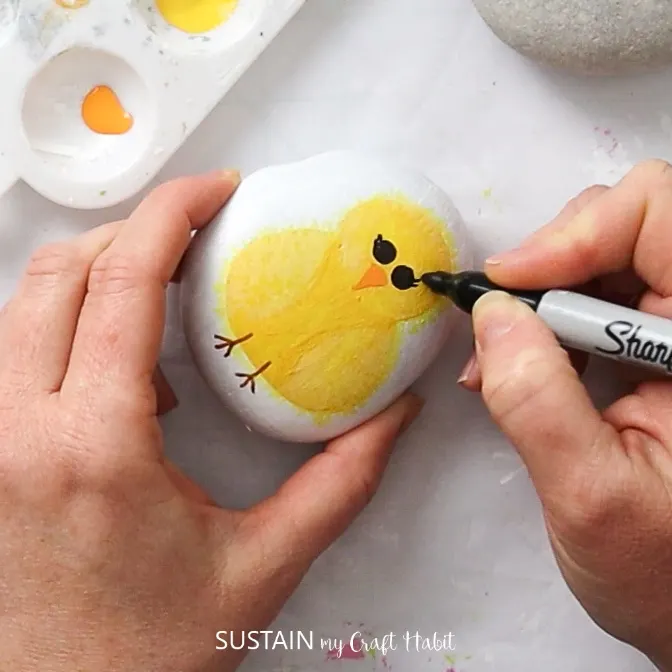
Have you heard of ‘The Kindness Rocks Project’?
If you love rock painting, we suggest you check out The Kindness Rocks Project, founded by Megan Murphy and is based on the idea that one message can change someone’s life and this can be done using rocks.
And if you want to receive a ton of inspiration and money saving ideas for decorating, gift-giving and crafting? Join HERE!
MORE Rock Painting Ideas…Yay!
Now that you’re set with the information on the best rock painting supplies, here are our favorite rock painting ideas to get you inspired. There are so many fun ideas out there to get you started.
- Sunflower Painted Rocks in a few easy steps
- How to Watercolor Pumpkins on Rocks
- Silly Monster Rocks
- St Patrick’s Day Painted Rocks and Gold Nuggets
- Adorable Penguin Rocks
- Lemon and Lime Rock Painting
- Sweet Strawberry Rocks
- Painting Flowers on Rocks
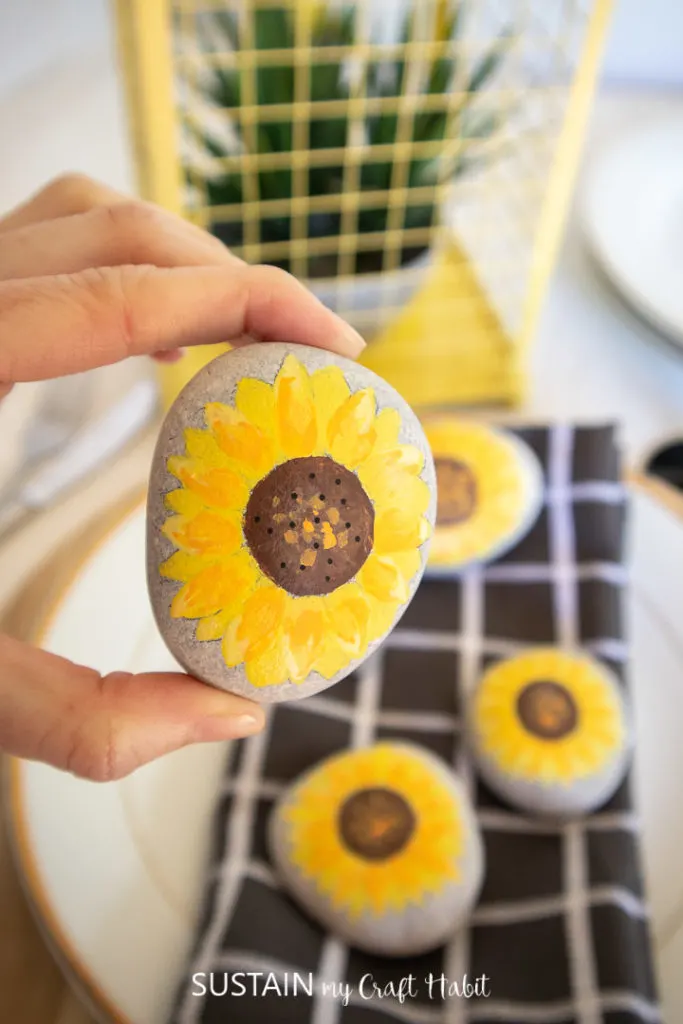
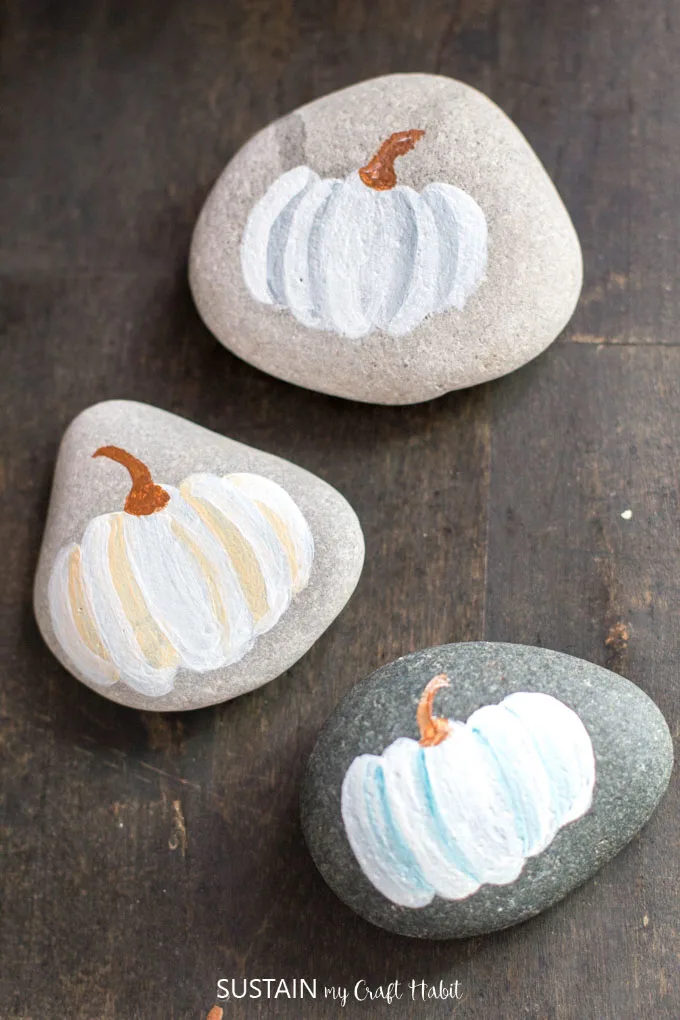
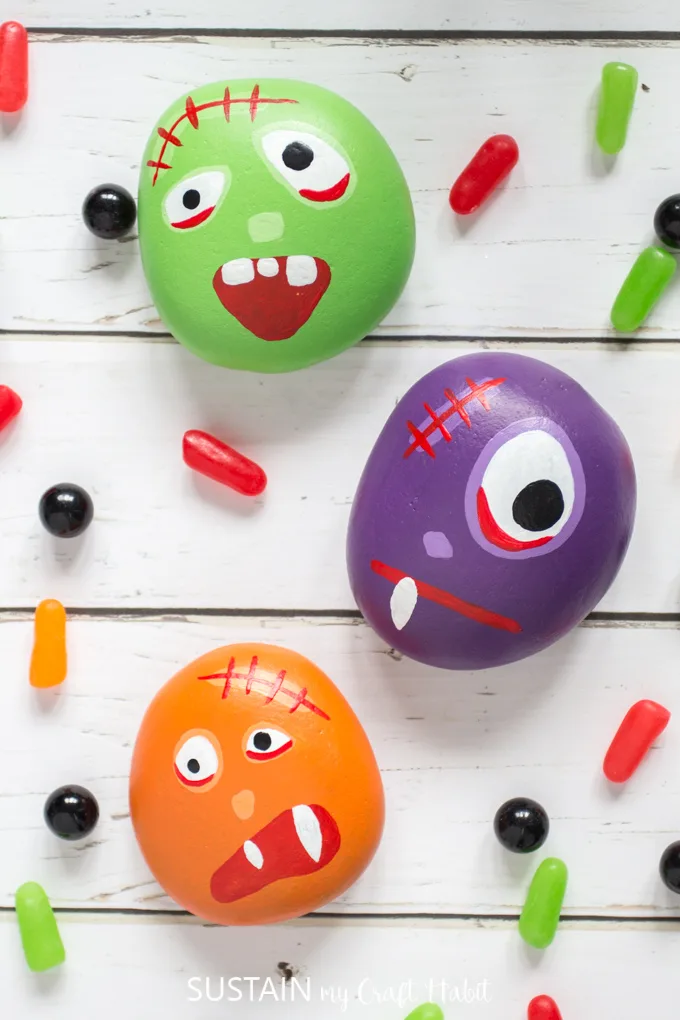

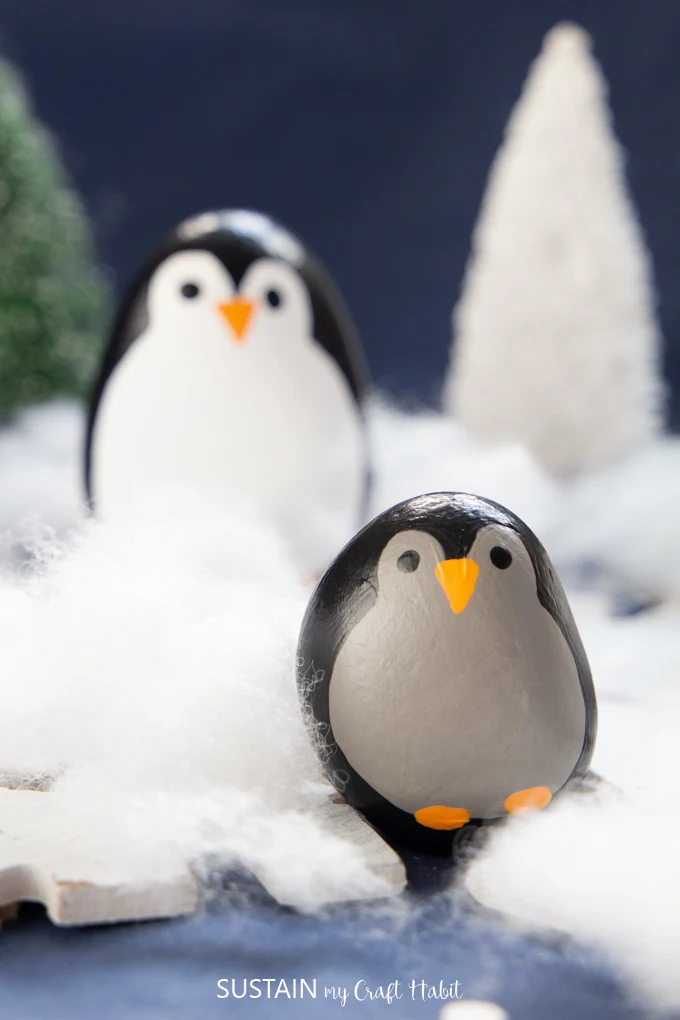
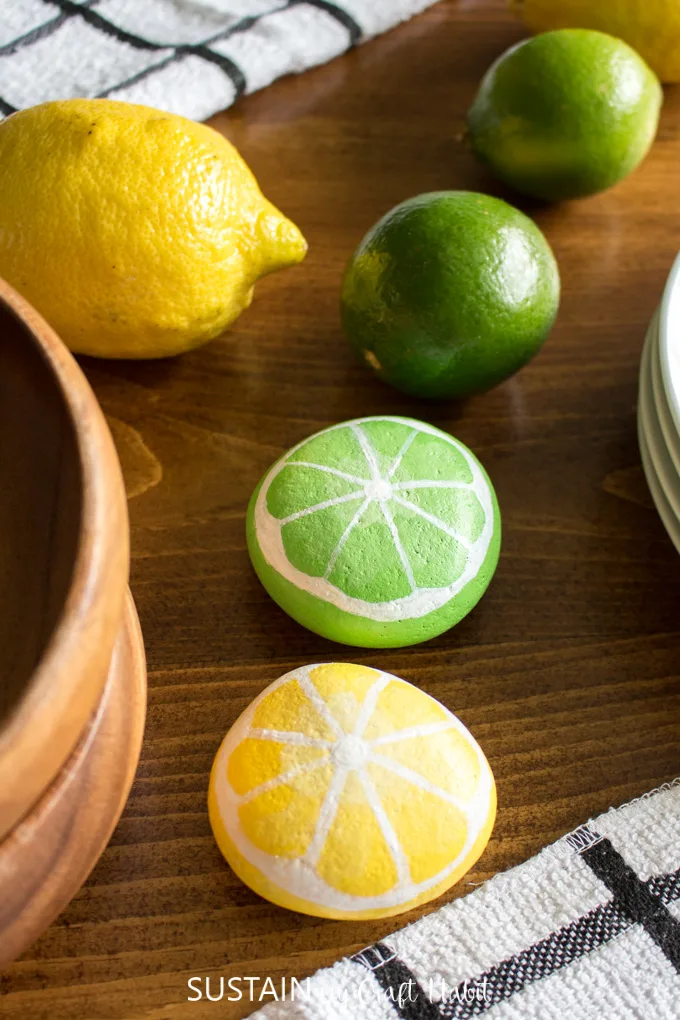
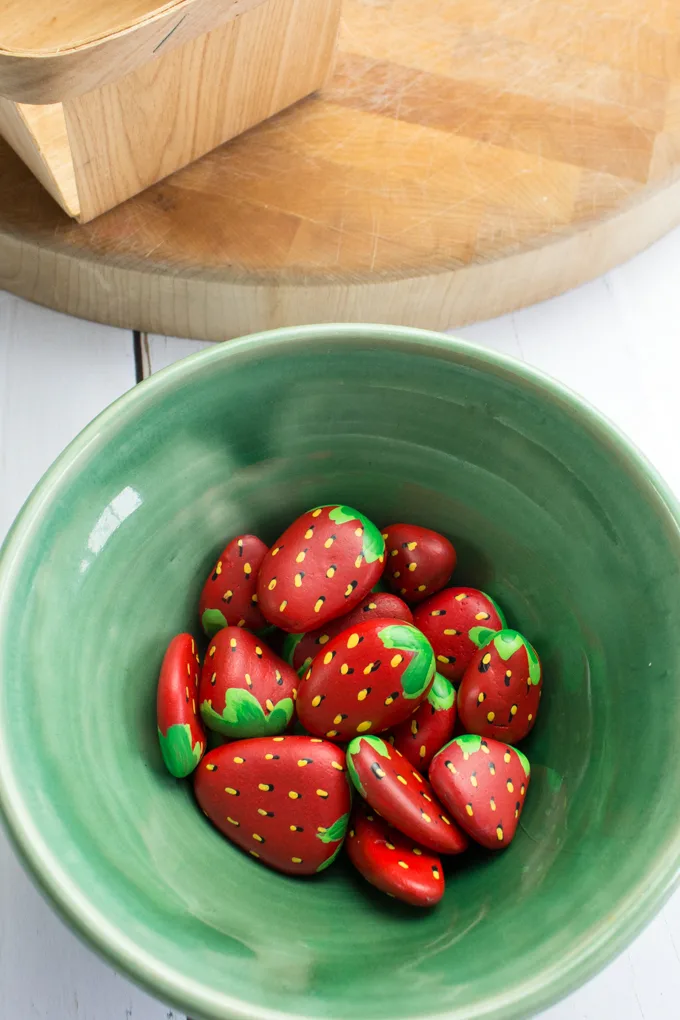
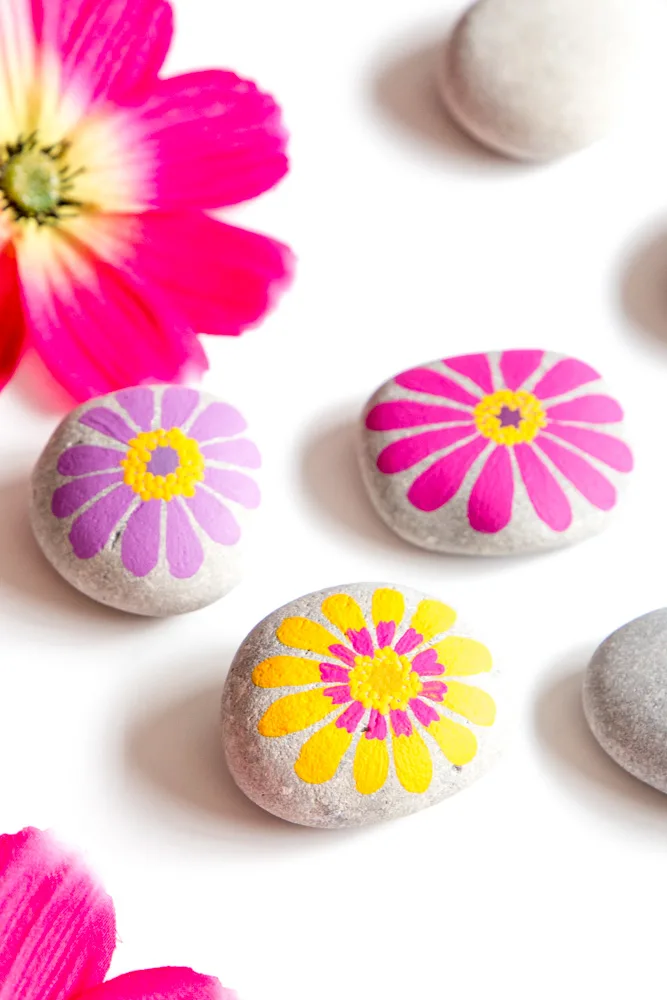
Another wonderful option that gives the appearance of paint is to use decoupage pretty paper napkins directly on to the rocks. How sweet are these Easter themed rocks?
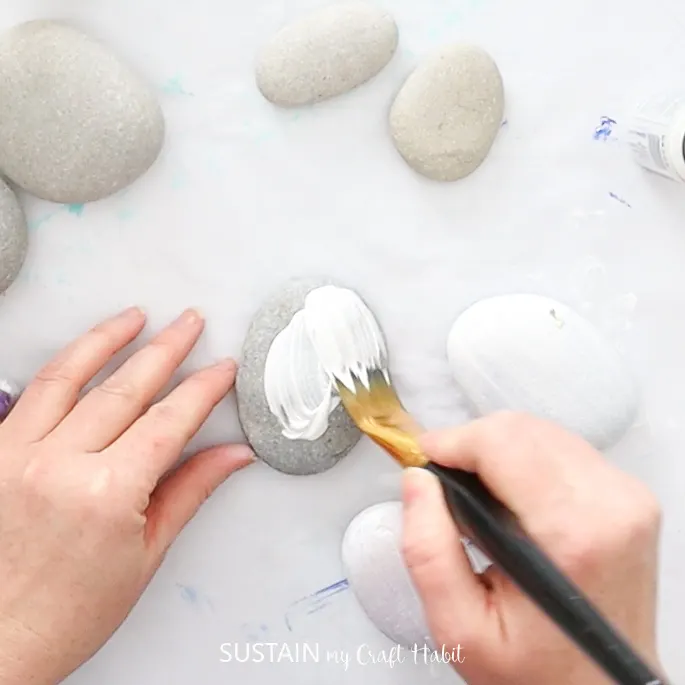
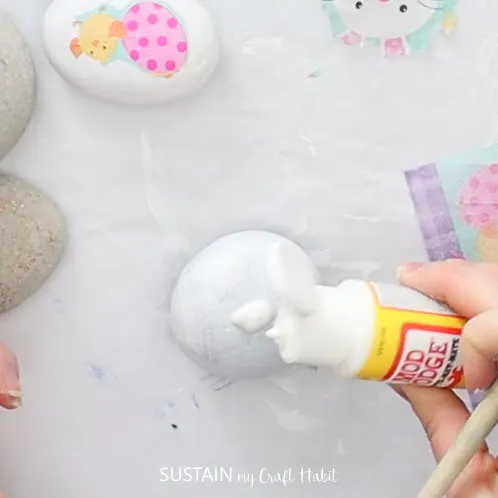
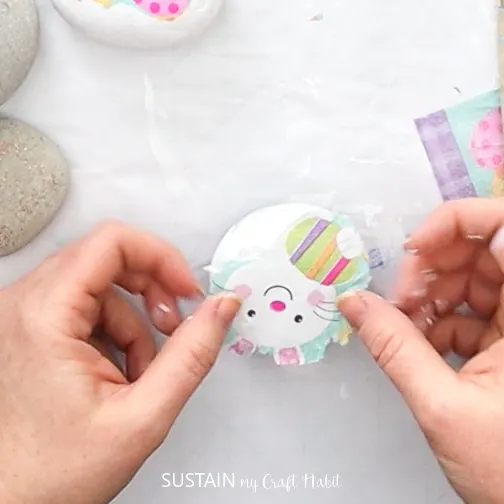
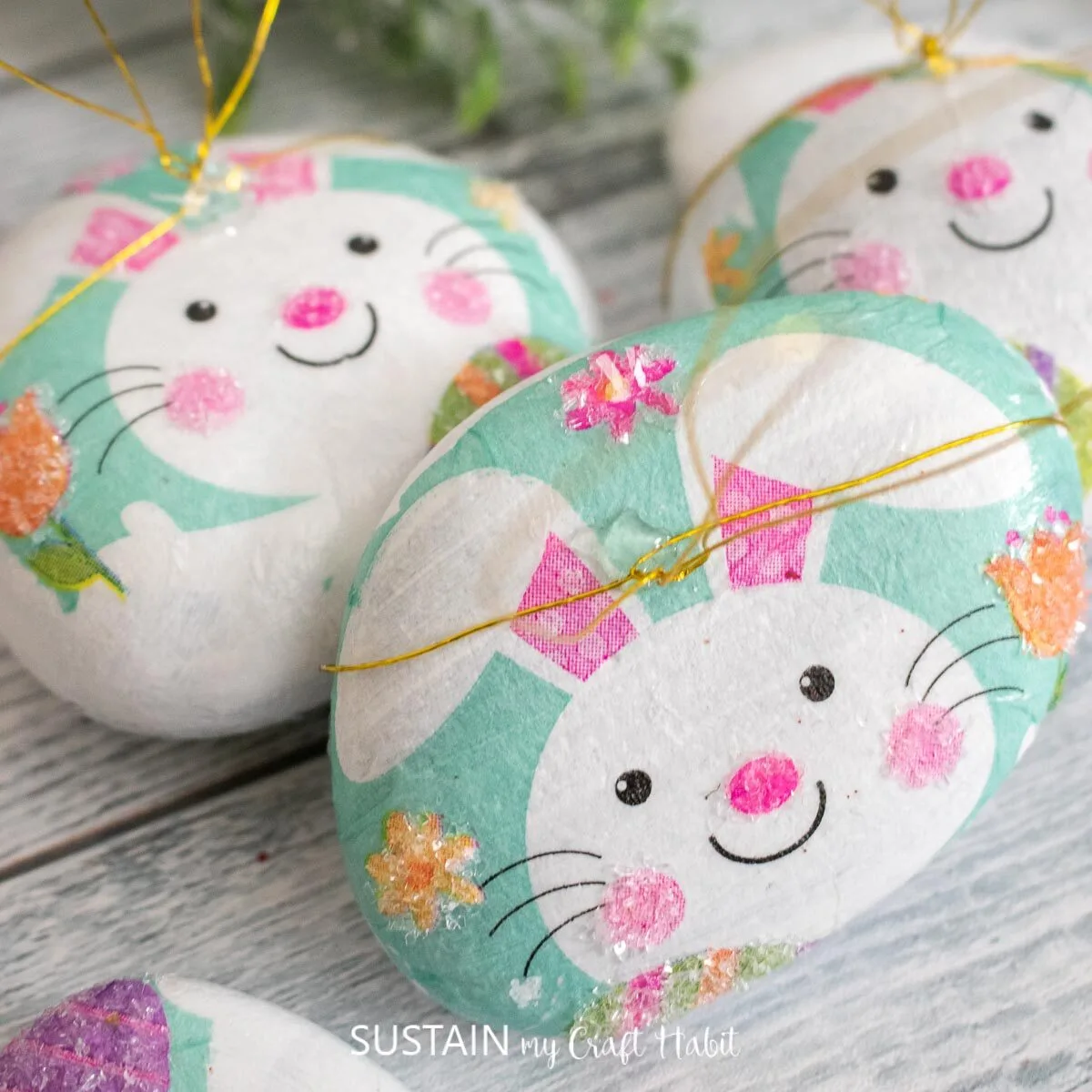
We hope you’ve found this post helpful and please let us know if you have any questions, comments or tips below!
Like it? Pin it for later!
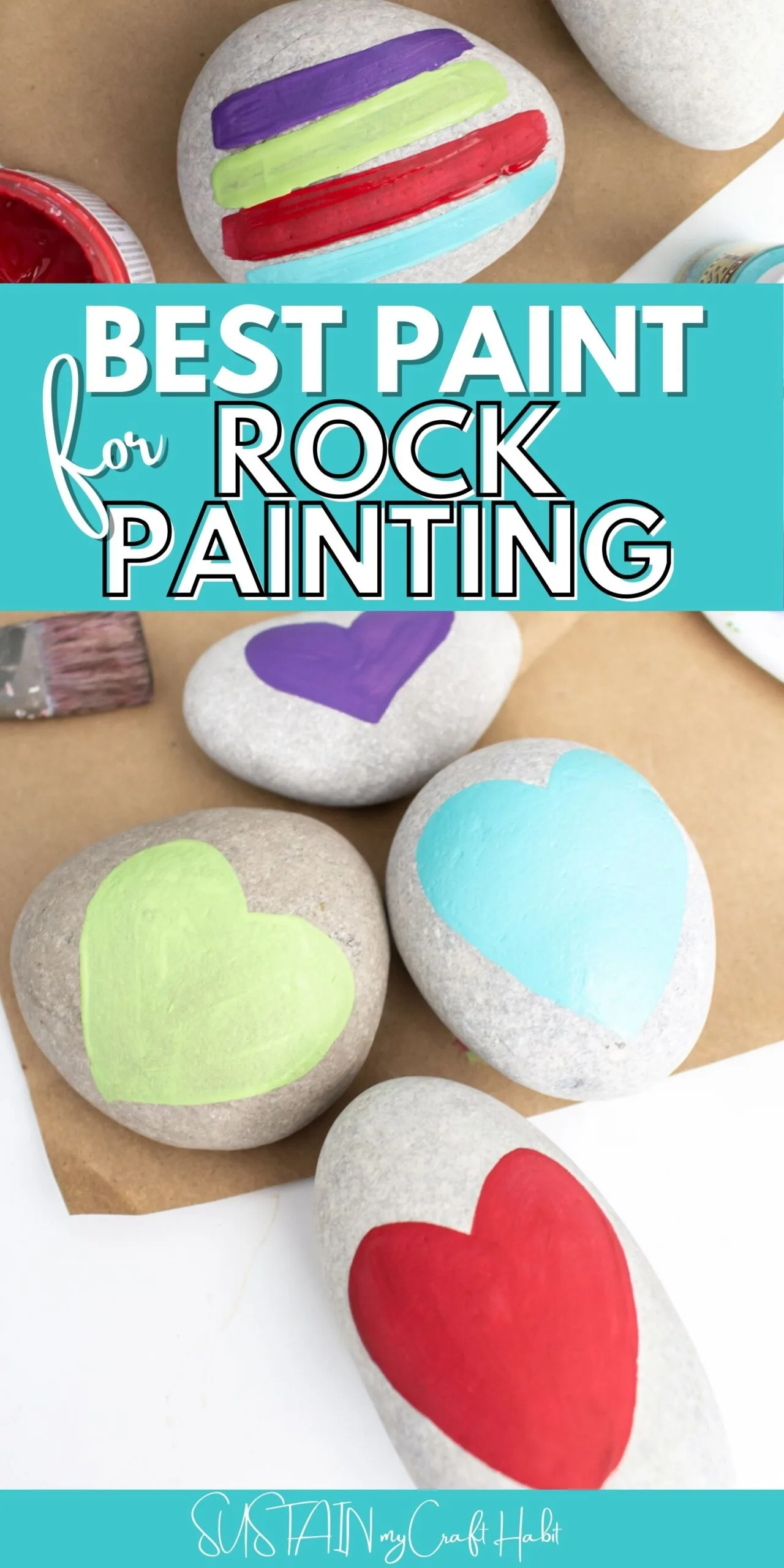

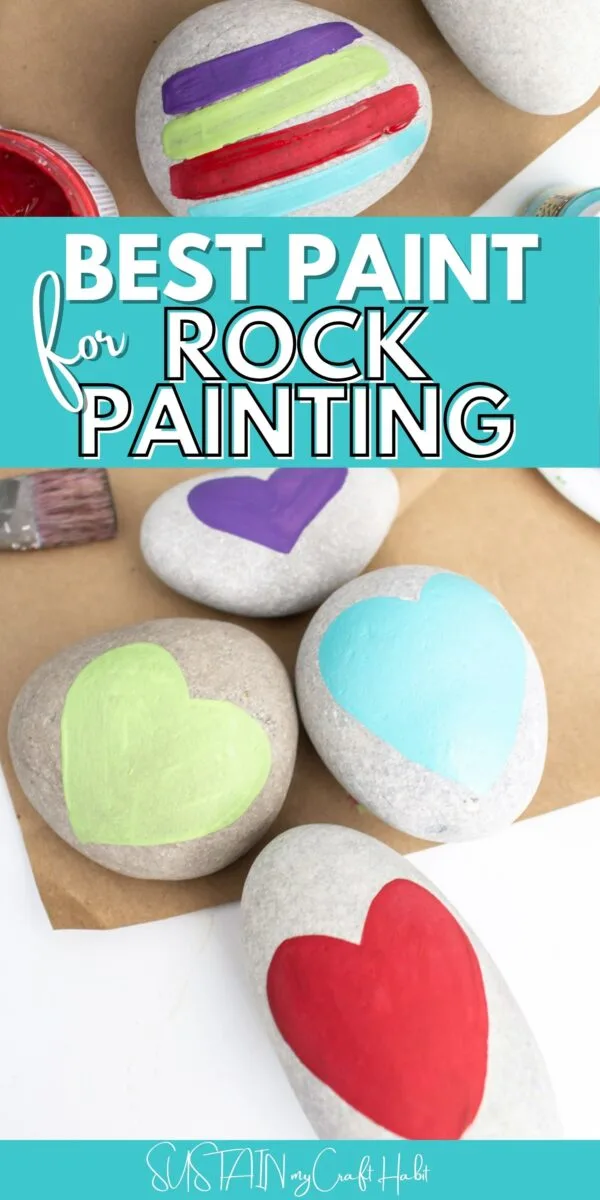
Marileigh Schulte
Thursday 3rd of October 2024
Best paint to use on etched rock ? Best protector for outdoor etched/painted rocks? Thank you.
Beth
Friday 21st of July 2023
Please note that if you use a Sharpie marker on your rocks, and apply a sealing spray, the marker WILL bleed. :( Unfortunately, we found out the hard way.
Jeannine
Tuesday 15th of August 2023
@Beth, Thank you for the note! I have found that too.